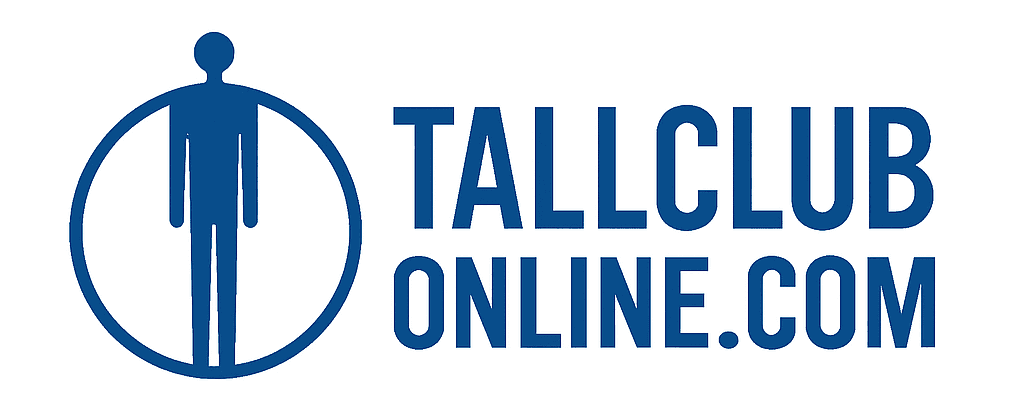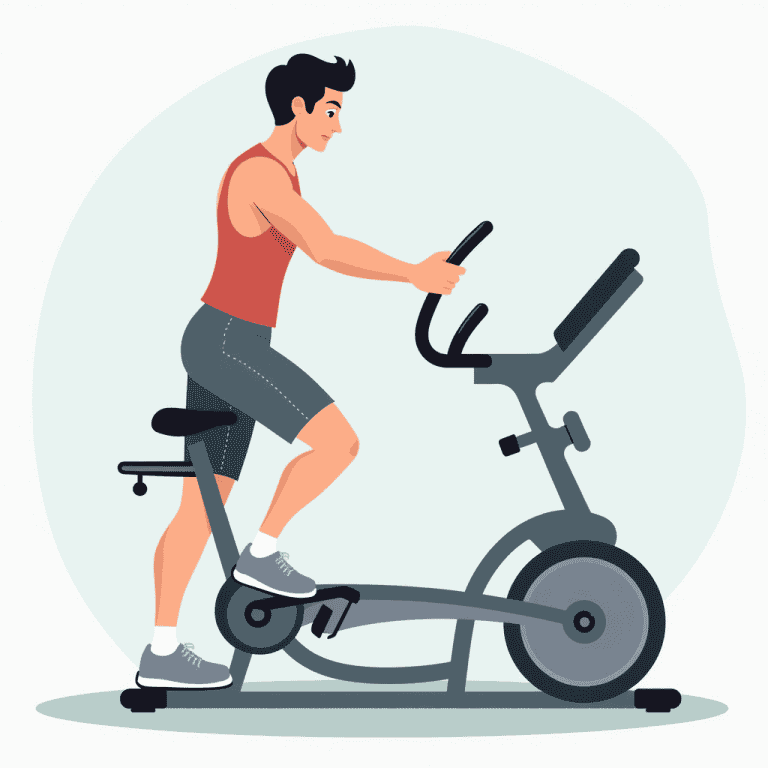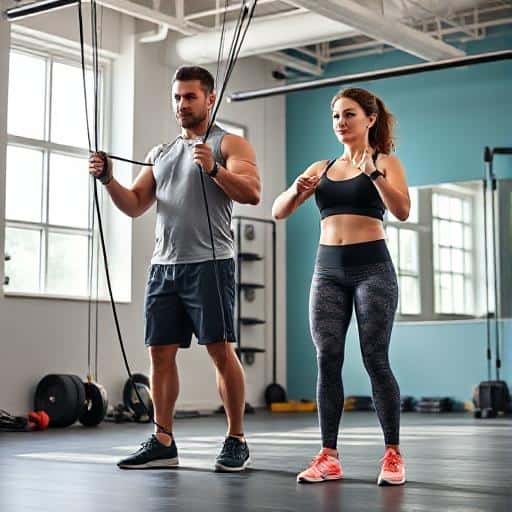Why Tall People Need Specialized Fitness Plans: A Science-Based Guide

Being tall comes with its own set of unique challenges when it comes to fitness. Whether you’re trying to maintain flexibility, build strength, or improve your overall health, a one-size-fits-all fitness plan may not work for you. In fact, science shows that tall bodies have specific needs that require specialized approaches to prevent injury and maximize performance.
In this article, we’ll dive into why tall people need customized fitness plans. We’ll explore how your height influences your biomechanics and the importance of tailored exercise routines that address your unique body structure.
The Science Behind Tall Bodies and Fitness
Tall individuals often have longer limbs, which can affect how your muscles and joints function. This can lead to a variety of fitness-related issues, from increased risk of injury to difficulty with certain exercises. Let’s break down why a specialized fitness plan is essential for tall people.
1. Longer Levers = Increased Stress on Joints
The longer your limbs, the more stress is placed on your joints when you perform movements. This is particularly noticeable in exercises like squats, lunges, or running, where the knees, hips, and lower back absorb more force. Without the proper adjustments to your form, this can lead to joint pain and injury.
2. Postural Imbalances
Tall individuals often face postural imbalances due to their height. You might find yourself slouching or hunching over, especially if you’re seated for extended periods. This leads to tight shoulders, back pain, and a lack of stability in the core muscles. Specialized fitness plans can help address these issues through targeted exercises that improve posture and strengthen your core.
3. Increased Range of Motion (ROM) Needs
Tall people have a greater range of motion (ROM) in their joints due to longer limbs. This means that some exercises may need to be modified to ensure proper form and avoid overstretching. Exercises like the deadlift, for example, may require adjustments to your stance to avoid stressing your lower back.
Key Components of a Specialized Fitness Plan for Tall People
A fitness plan for tall people should take into account several important factors, including joint health, posture, flexibility, and strength. Here are some key components to consider:
1. Joint-Friendly Exercises
Due to the increased stress on your joints, it’s crucial to incorporate exercises that are joint-friendly. These exercises help reduce the risk of injury and provide a more sustainable way to train your body.
Examples of Joint-Friendly Exercises:
Swimming: A full-body workout that’s gentle on your joints while building strength and cardiovascular fitness.
Cycling: Low-impact and great for improving leg strength and endurance.
Rowing: A low-impact exercise that works both the upper and lower body, providing a great cardiovascular workout.
2. Posture-Correcting Workouts
Maintaining good posture is essential for tall people, as poor posture can lead to muscle imbalances and chronic pain. A fitness plan that includes exercises to strengthen the muscles of the back, shoulders, and core is crucial.
Exercises to Improve Posture:
Planks: Strengthens the core and helps with spinal alignment.
Face Pulls: Targets the upper back and shoulders, improving posture and reducing the tendency to hunch forward.
Wall Angels: Focuses on mobility and strengthening the muscles responsible for maintaining a neutral spine.
3. Flexibility and Mobility Routines
Stretching and mobility exercises are vital for tall individuals. Longer limbs can lead to tight muscles and limited flexibility, particularly in the hips, hamstrings, and lower back. A fitness plan that includes dynamic and static stretches will help improve flexibility and prevent stiffness.
Recommended Stretches:
Hip Flexor Stretch: Helps release tightness in the hips, which is common for tall people.
Hamstring Stretch: Prevents tightness in the back of the legs, which can affect posture and mobility.
Torso Twists: Increases flexibility in the spine and helps with rotational movements.
4. Strength Training for Tall Bodies
Strength training is an essential part of any fitness plan. However, for tall people, it’s important to focus on exercises that are suitable for your frame and build. Exercises that emphasize proper form and allow for gradual increases in weight can help build strength without risking injury.
Strength Training Tips for Tall People:
Use Proper Form: Tall individuals should pay special attention to their form during exercises like squats and deadlifts, ensuring their back remains neutral and their knees stay in line with their toes.
Use a Wider Stance: A wider stance in squats and deadlifts can help alleviate stress on the knees and lower back.
Progress Slowly: Gradually increase the weight to avoid overwhelming your joints and muscles.
5. Cardiovascular Fitness
Cardio exercises are important for overall health, but tall people often need to adjust their workouts to avoid overstressing their joints. Low-impact cardio activities, such as cycling, swimming, or walking, are great options for tall individuals.
Low-Impact Cardio Options:
Walking: A natural and low-impact way to stay active while minimizing joint stress.
Elliptical Trainer: Provides an effective cardiovascular workout without putting too much strain on the joints.
Water Aerobics: A great full-body workout that is gentle on the joints while improving cardiovascular health.
Benefits of a Specialized Fitness Plan for Tall People
By tailoring your fitness routine to your height and body structure, you can enjoy a range of benefits, including:
Reduced Risk of Injury: Customizing exercises to fit your body’s needs minimizes the chances of joint pain or overuse injuries.
Improved Posture and Alignment: Posture-correcting exercises help you stand tall and prevent the common slouching that many tall people experience.
Enhanced Strength and Mobility: A well-rounded fitness plan increases overall strength, flexibility, and mobility, making it easier to perform daily tasks and activities.
Greater Fitness Gains: By focusing on exercises that are suited for your body, you’ll see greater improvements in your fitness performance over time.
Key Takeaways
Tall people have unique fitness needs that require specialized plans to prevent injury and improve performance.
Joint-friendly exercises, posture-correcting workouts, and flexibility routines are essential for tall individuals.
Strength training should be adapted to your frame to avoid overstraining your joints.
Consistency and proper form are key to seeing progress and maintaining long-term fitness.
FAQ: Specialized Fitness Plans for Tall People
Q1: Why do tall people need a specialized fitness plan?
Tall individuals have longer limbs and a larger frame, which affects biomechanics and can increase the risk of injury. A customized fitness plan helps address these unique challenges.
Q2: What exercises should tall people avoid?
While there are no exercises specifically off-limits, tall people should be cautious with exercises that place excessive strain on the lower back, knees, or shoulders, such as high-impact jumps or exercises performed with improper form.
Q3: How can I improve my posture as a tall person?
Incorporating exercises that strengthen the back, shoulders, and core, like planks and face pulls, can help improve posture and prevent slouching.
Q4: Can strength training be harmful to tall people?
When done with proper form and technique, strength training is beneficial for tall people. However, it’s important to start with lighter weights and gradually increase to avoid overloading the joints.






